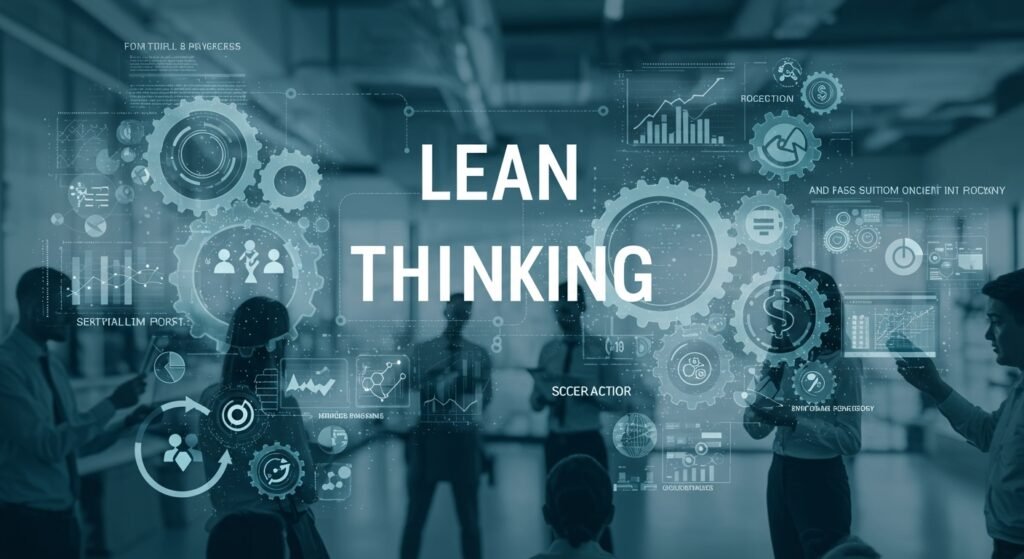In today’s fast-paced and highly competitive business landscape, organizations are constantly seeking methodologies to enhance efficiency, reduce waste, and deliver greater value to customers. Among the most impactful frameworks is Lean Thinking for Modern Operations, a philosophy that originated in the Toyota Production System and has since transcended manufacturing to virtually every sector. This article explores how embracing Lean principles can revolutionize your operational processes, leading to significant improvements in productivity, quality, and overall business agility.
Table of Contents
- What is Lean Thinking?
- Why Lean Thinking for Modern Operations is Crucial Today
- Implementing Lean in Your Organization
- Key Benefits of Adopting Lean Thinking
- The Future Outlook of Lean Thinking
What is Lean Thinking?
Lean Thinking is a systematic method for the elimination of waste (Muda) within a manufacturing or operational system. It is predicated on five core principles:
- Define Value: Identify what the customer truly values, which is the only thing for which they are willing to pay.
- Map the Value Stream: Document all the steps in the process from raw materials to the delivered product/service, identifying value-adding and non-value-adding steps.
- Create Flow: Ensure the progressive movement of products/services through the value stream with no interruptions.
- Establish Pull: Produce only what the customer needs, when they need it, pulling products through the value stream rather than pushing them.
- Seek Perfection: Continuously strive to improve and eliminate waste.
By focusing on these principles, organizations can create more efficient, responsive, and higher-quality operations.
Why Lean Thinking for Modern Operations is Crucial Today
The contemporary business environment is characterized by rapid technological advancements, evolving customer expectations, and increasing global competition. Applying Lean Thinking for Modern Operations is not just about cost-cutting; it’s about building resilience and adaptability. In an era where digital transformation and data-driven decision-making are paramount, Lean provides a foundational methodology to optimize these new capabilities.
Addressing Digital Transformation
Lean principles provide a robust framework for integrating new technologies. For instance, by mapping value streams, organizations can identify where automation or advanced analytics can yield the most significant benefits, ensuring technology investments directly support value creation and waste reduction. Lean methodologies complement agile development in software and product delivery, fostering continuous improvement cycles.
Consider the impact on productivity metrics:
| Metric | Before Lean | After Lean | Improvement (%) |
|---|---|---|---|
| Cycle Time | 15 days | 7 days | 53% |
| Defect Rate | 3.5% | 0.8% | 77% |
| Employee Engagement | 60% | 85% | 42% |
| Customer Satisfaction | 75% | 92% | 23% |
Implementing Lean in Your Organization
Successful Lean implementation requires commitment from leadership and engagement across all levels. It’s not a one-time project but a cultural shift towards continuous improvement.
Key Tools and Techniques
- Value Stream Mapping (VSM): A powerful visual tool to analyze and design the flow of materials and information required to bring a product or service to a customer.
- 5S Methodology: Sort, Set in Order, Shine, Standardize, Sustain – a systematic approach to workplace organization.
- Kanban: A visual system for managing work as it moves through a process, helping to limit work-in-progress and maximize efficiency.
- Kaizen: A philosophy of continuous, incremental improvement involving everyone in the organization.
To deepen your understanding of Lean tools, you might find this external resource on the Lean Enterprise Institute website very helpful. Implementing these tools effectively can lead to remarkable results. For more detailed strategies on optimizing internal workflows, explore our guide on Effective Process Improvement Strategies.
Key Benefits of Adopting Lean Thinking
The advantages of integrating Lean Thinking into your operations are multifaceted:
- Reduced Waste: Eliminates non-value-adding activities like overproduction, waiting, unnecessary transport, over-processing, excess inventory, unnecessary motion, and defects.
- Improved Quality: Focus on quality at every step, reducing errors and rework.
- Increased Efficiency and Productivity: Streamlined processes and optimized resource utilization.
- Enhanced Customer Satisfaction: Delivering higher quality products/services faster and more reliably.
- Stronger Employee Engagement: Empowering employees to identify and solve problems, fostering a culture of ownership and innovation.
- Greater Agility and Adaptability: The ability to respond quickly to market changes and customer demands.
The Future Outlook of Lean Thinking
Lean Thinking continues to evolve, integrating with concepts like Industry 4.0, Big Data, and AI to create “Lean 4.0.” This evolution promises even more precise waste identification, predictive maintenance, and highly optimized value streams. As operations become more complex and interconnected, the foundational principles of Lean — focusing on value, flow, and continuous improvement — remain more relevant than ever.
In conclusion, adopting Lean Thinking for Modern Operations is no longer just an option but a strategic imperative for businesses aiming for sustainable growth and competitive advantage. By systematically eliminating waste, enhancing flow, and relentlessly pursuing perfection, organizations can unlock their full potential and thrive in the dynamic global marketplace.


